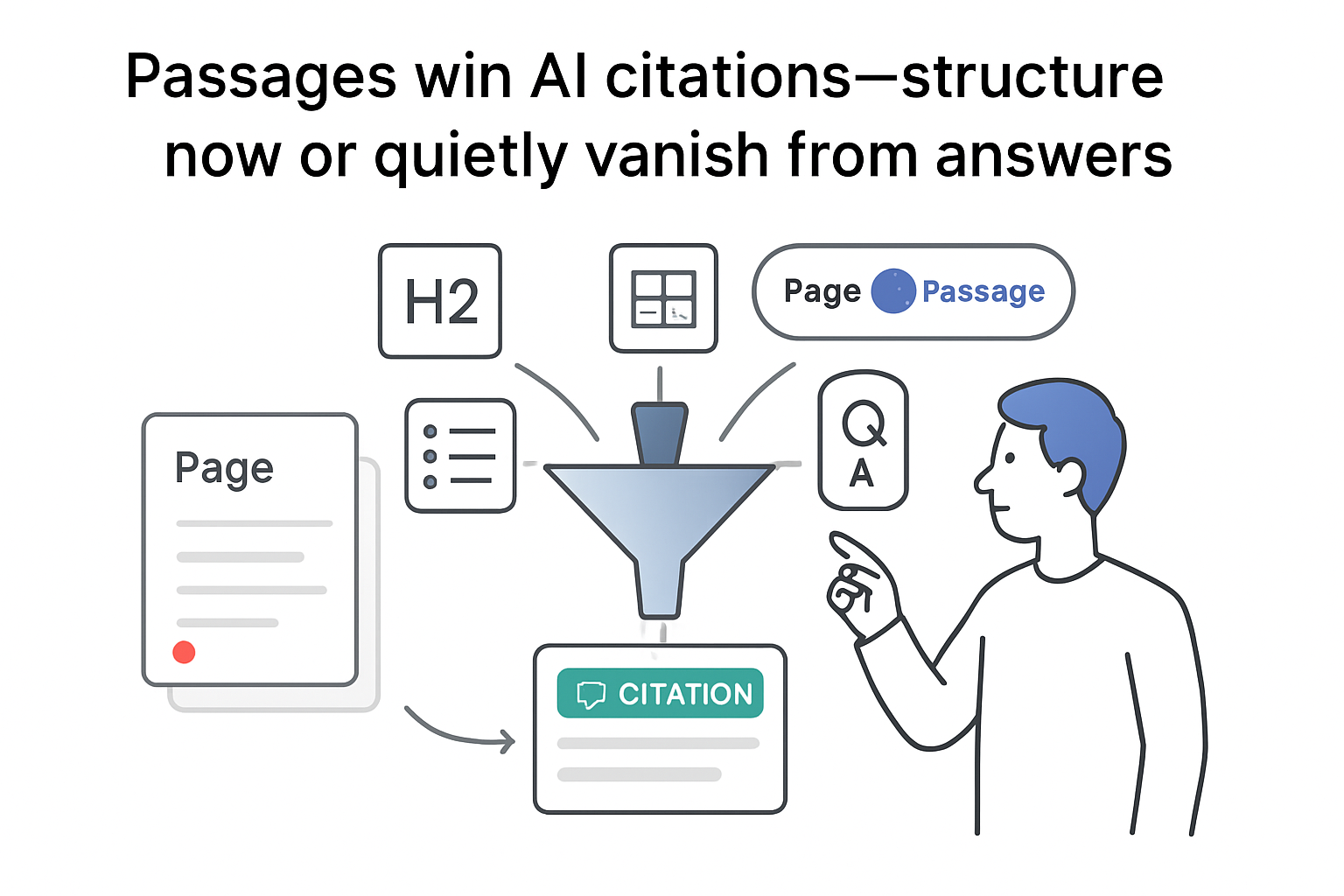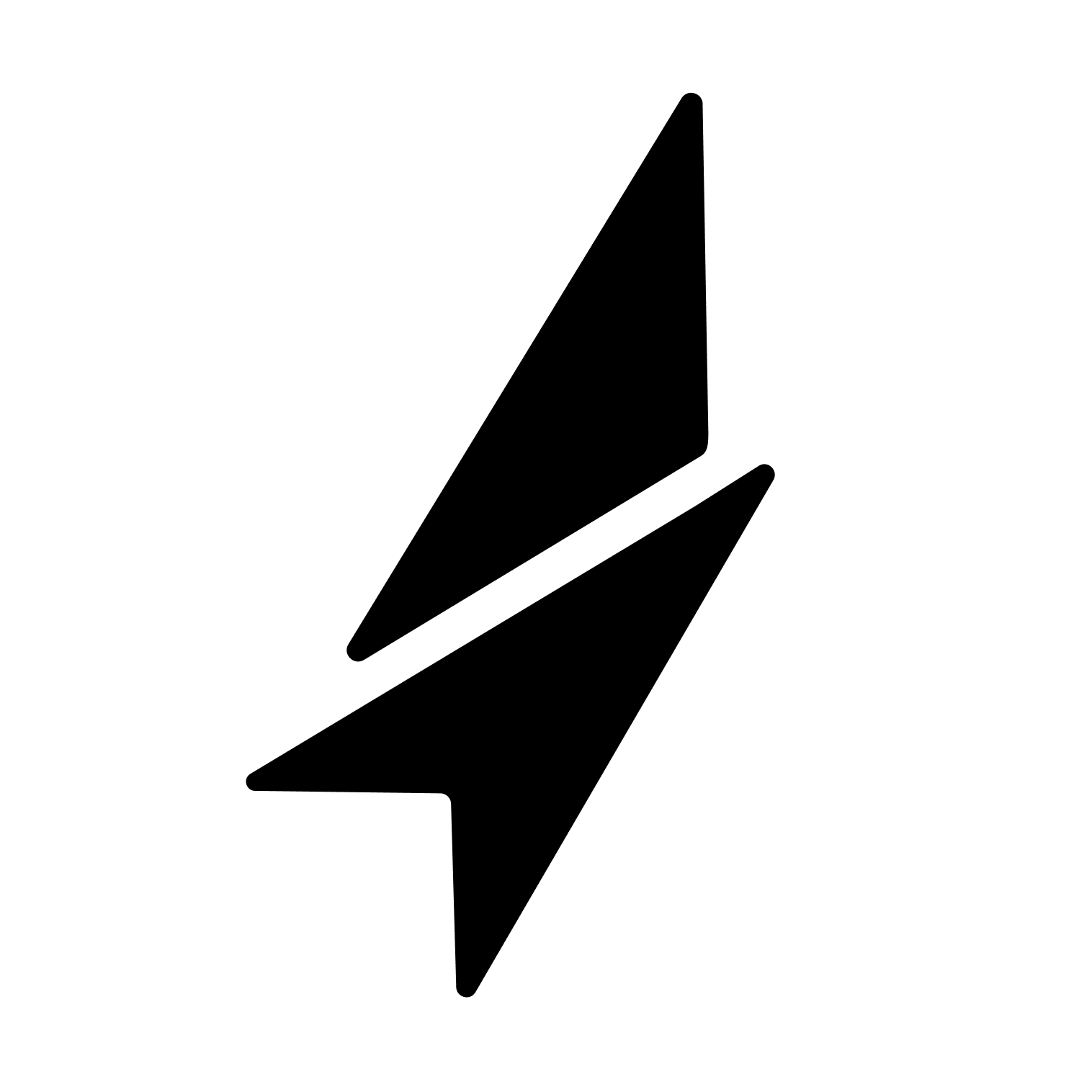Marketers are debating whether AEO/GEO is a new discipline or just SEO in new packaging. Bottom line: it is largely SEO fundamentals. The real shift is that AI answers reward content that is easy to select at the passage level, not just pages that rank.
Key takeaways for AEO/GEO vs. SEO
- Selection beats rank: AI systems assemble answers from page passages. Being one of a few cited sources matters more than average position. Tactics that improve passage clarity - lists, tables, Q&A, precise headings - raise selection odds without abandoning standard SEO.
- Chunk-ready content is table stakes: Google documentation says passage ranking evaluates parts of a page, and Google’s 2020 Search On announcement cited a ~7% impact at rollout. Bing’s guide confirms similar parsing today. If your pages are not modular, you will underperform in AI answers even if you can still rank broadly.
- Structured information is a lever: Semantic HTML, explicit units/specs, and clean lists or tables reduce ambiguity and increase lift probability in AI answers. This simultaneously supports Featured Snippets and AI panels. See Bing’s guide and this analysis on disambiguation.
- Q&A works - if it is not thin: Clear question and answer pairs can be lifted verbatim, but boilerplate Q&A adds risk. Thin or generic entries depress quality signals and reduce inclusion chances. See Bing’s guide.
- Practical implication: Treat AEO/GEO as a packaging layer on top of SEO. The work is reformatting and clarifying content, not chasing new keywords or gimmicks.
Situation snapshot
- Trigger: Bing published Optimizing your content for inclusion in AI search answers, stating AI assistants parse content into modular pieces and that titles, headings, lists, tables, Q&A, and semantic clarity aid inclusion. See the guide.
- Facts:
- Google’s passage ranking identifies relevant sections within pages. Google’s documentation says so, and a 2020 announcement estimated ~7% of queries improved at rollout.
- Bing states assistants rank and assemble smaller content pieces and endorses classic SEO elements for AI answer inclusion in its guide.
- SEJ summarized community debate and concluded AEO/GEO overlaps with established SEO methods.
Breakdown and mechanics
Core system: AI assistants parse - score passages - assemble answers - attribute citations.
- Parsing: Pages are split into units (passages/chunks). Headings, lists, tables, captions, and tight paragraphs improve boundary detection and topical focus. See Bing’s guide and Google’s documentation that says how passage ranking works.
- Relevance scoring: Each passage’s match to intent is weighed. Specificity and measurable facts beat vague language. Units (for example, 42 dB), product attributes, and synonyms expand match coverage without keyword stuffing.
- Assembly and attribution: Assistants stitch passages and cite a small set of sources. Inclusion probability rises when a passage:
- clearly answers a discrete question,
- sits in semantically marked sections,
- avoids ambiguity and superlatives, and
- uses structured information such as lists or tables.
- Precedent: Featured Snippets reward concise, structured answers. Passage ranking rewards well scoped sections. Both behaviors foreshadow AI answer construction.
Simple model (assumptions for planning, not measured data)
- Assume 20-30% of queries on a given engine surface an AI answer panel citing roughly 3-5 sources.
- If AI answers capture 10-30% of clicks on those queries and allocate them across 3-5 citations, the per citation share could be about 2-10% of total query clicks.
- Conclusion: For queries with AI panels, being cited can offset losses from reduced classic blue link CTR. Not being cited can produce a material drop even if your rank stays stable. Validate with your own logs.
A - B - C chain: Semantic structure + clear Q&A + lists/tables - better passage boundaries and intent match - higher chance of selection in AI answers - steadier traffic despite volatile SERP layouts.
Impact assessment
Paid Search (Microsoft Advertising and Google Ads)
- Direction: Neutral to slightly negative short term for top of funnel clicks if AI panels absorb attention. Limited evidence of major ad load changes today.
- Who benefits: Advertisers whose landing pages mirror query intent with concrete specs and scannable sections. This can raise Quality components and post click performance.
- Actions: Tighten landing page clarity (units, tables, FAQs) to support both AI selection and conversion. Monitor impression share and CTR shifts on queries known to show AI panels.
Organic Search
- Direction: Positive for sites with modular, unambiguous content. Negative for verbose, unstructured articles.
- Who benefits: Brands with clean headings, consistent schema, and precise Q&A blocks tied to actual user questions. Sites already winning snippets.
- Actions:
- Reformat key pages into sections that answer one intent each (about 150-300 words) with explicit headings.
- Convert dense paragraphs into lists or tables where applicable.
- Add high quality Q&A pairs only where they remove friction or consolidate support knowledge.
Content and Creative
- Direction: Emphasis shifts from length to clarity and measurability.
- Who benefits: Teams that document specs, constraints, units, audiences, and comparisons directly on page.
- Actions: Ban vague adjectives. Require measurable claims. Standardize component templates (Intro - Spec list or table - How it works - FAQ with citations).
Operations and Analytics
- Direction: More granular tracking is needed at the passage or section level.
- Who benefits: Organizations that can tag sections and map them to queries.
- Actions:
- Instrument scroll and copy events and on page anchors to infer which sections are consumed.
- Track AI panel presence for key queries. Compare CTR and referral patterns from ai or citation style paths where available.
Scenarios and probabilities
- Base (likely): AEO/GEO remains a packaging layer on SEO. Engines keep using passage level selection, with small but real traffic redistribution to cited sources on AI panels.
- Upside (possible): Engines expand citations and linking clarity in AI answers. Well structured sites gain net traffic even if classic rankings slip.
- Downside (edge): AI panels reduce outbound links or shrink citation count. Non cited sites see larger organic CTR drops on affected queries.
Risks, unknowns, limitations
- Unknowns: Exact share of queries with AI panels, click allocation to citations, and how often citations rotate. Engines have not published comprehensive figures.
- Variability: Panel behavior differs by market, device, and query class. Effects may be uneven across industries.
- Confounders: Concurrent changes such as core updates, UI tests, and ad load can mask AI panel impact in analytics.
- Falsifiers: If independent logs show no CTR delta on AI panel queries after structural rewrites, the selection hypothesis is weakened.
- Content risk: Overproduced Q&A or list spam can lower perceived quality and reduce selection odds.
Sources
- Microsoft/Bing (Krishna Madhavan), Oct 2025, blog: Optimizing your content for inclusion in AI search answers - Bing guide.
- Google, docs: Ranking systems guide - Passage ranking system. Official documentation that says how passage ranking works.
- Google, Oct 2020, blog: Search On - improving results with passage understanding - 2020 announcement.
- Coywolf, analysis: Disambiguation and visibility in Google - context on disambiguation.
- Search Engine Journal (Roger Montti), Oct 2025: Review of AEO/GEO tactics leads to a surprising SEO insight.








.svg)